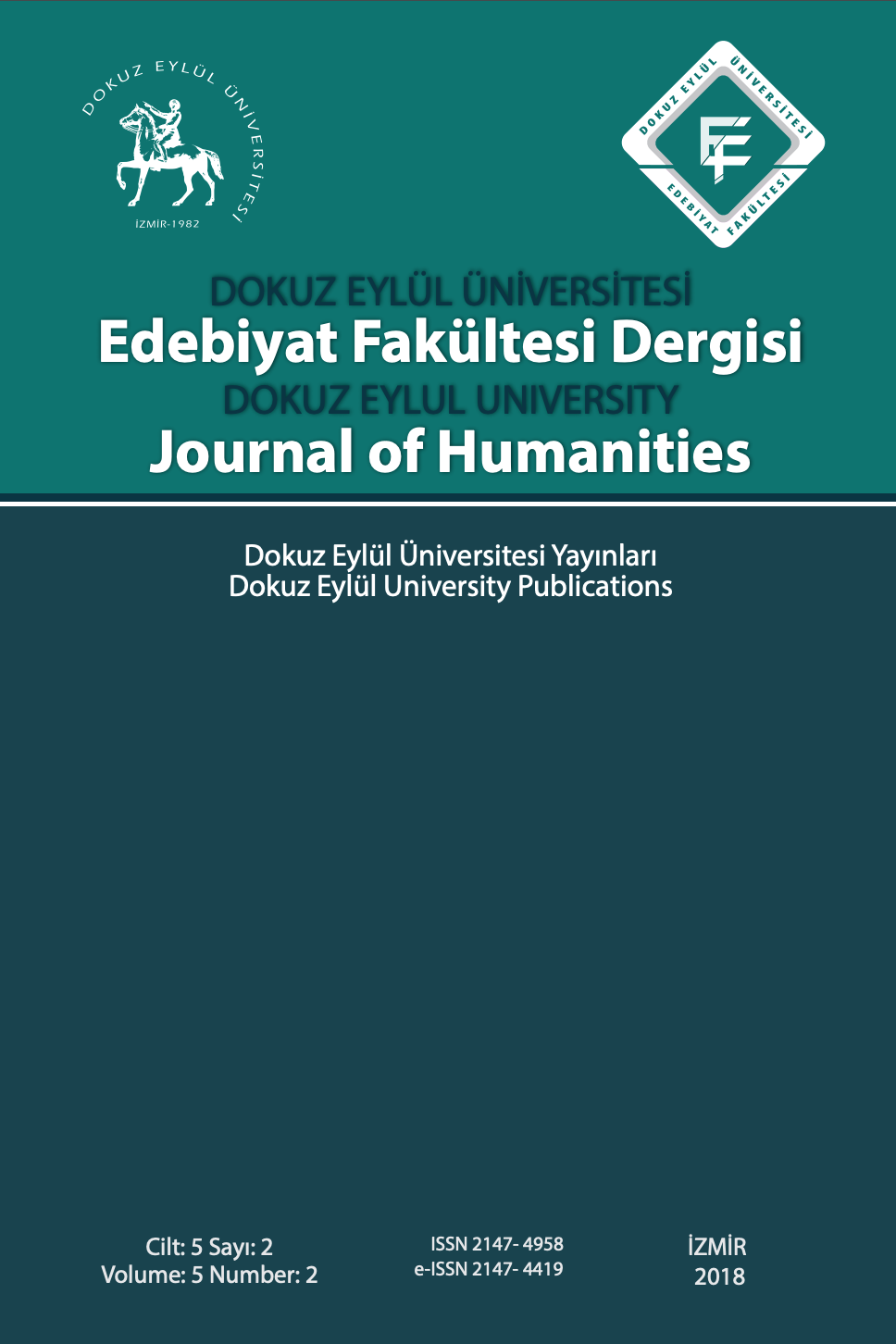AİDİYET DİLİNE KARŞI SORGULAMANIN DİLİ: PAMUK’UN KAR ROMANI VE AKIŞ HALİNDEKİ KİMLİKLER
Kimlik, aidiyet, dikotomiler, akış, dil
LANGUAGE OF BELONGING vs. LANGUAGE OF EXPLORATION: PAMUK’S SNOW AND ITS IDENTITIES IN FLUX
Identity, belonging, dichotomies, flux, language,
___
- Coury, David. (2009). “"Torn Country": Turkey and the West in Orhan Pamuk's Snow.” Critique. 50.4
- Erol, Sibel. (2007). Reading Orhan Pamuk's Snow as Parody: Difference as Sameness. Comparative Critical Studies - Volume 4, Issue 3, pp. 403-432.
- Irzık, Sibel. (2003). Allegorical Lives: The Public and the Private in the Modern Turkish Novel. The South Atlantic Quarterly, Volume 102, Number 2/3, Spring/Summer 2003, pp. 551-566.
- Pamuk, Orhan. (2004). Snow. 1st ed. New York: Knopf and Random House.
- -------, (2006). Kar. 11th ed. Cağaloğlu İstanbul: İletişim.
- Pederson, Joshua. (2013). “The Writer as Dervish: Sufism and Poetry in Orhan Pamuk's Snow. Religion & Literature, vol. 45, no. 3, 2013, pp. 133–154. Jstor, www.jstor.org/stable/24397718.
- Riley, Nathaniel Brann. (2007). Orhan Pamuk’un Kar’inda Epigrafik İlişkiler. Yayınlanmamış Yüksek Lisans Tezi. Bilkent Üniversitesi, Ankara.
- Seyhan, Azade. (2009) “Seeing through the Snow”. 19 - 25 October 2006. Issue No. 817. http://weekly.ahram.org.eg/2006/817/cu5.htm, (8 November 2009).
- Von Heyking, John. (2006.) Mysticism in Contemporary Islamic Political Thought: Orhan Pamuk and Abdolkarim Soroush. Volume XIX, Nos. 1 and 2,
- ISSN: 2147-4958
- Yayın Aralığı: 2
- Başlangıç: 2011
- Yayıncı: Dokuz Eylul Üniversitesi Matbası
BULGARİSTAN'DA AB ÜYELİĞİ SÜRECİNDE TÜRK KİMLİĞİNİN SÖYLEMSEL İNŞASI
AİDİYET DİLİNE KARŞI SORGULAMANIN DİLİ: PAMUK’UN KAR ROMANI VE AKIŞ HALİNDEKİ KİMLİKLER
TÜRKÇEDE BELÖ'LERİN EVRELİKLERİ: EŞSÜREMSİZLİĞE YÖNELİK BİR SEZDİRİM
INDIVIDUALISM AND COSMOPOLITANISM IN THE IMPERIAL STOA
TUTUNAMAYANLAR’DA ŞİZO-ÖZNE İNŞASI BAĞLAMINDA YERSİZYURTSUZLAŞMA
PLATON’UN İDEALAR ÖĞRETİSİ ÜZERİNE BİR YORUM
TEKNOLOJİ ÜZERİNE DİYALOG GELİŞTİRMEYE DAYALI KUŞAKLAR ARASI BİR ODAK GRUP ÇALIŞMASI
